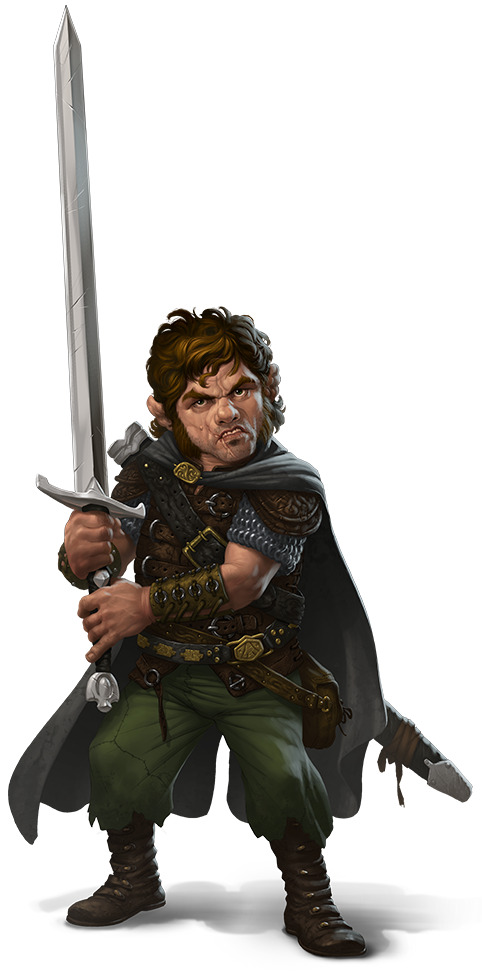After spending a lot of time polishing and improving the World of Darkness game system, we are now once again working on our Pathfinder support, in particular we have started work on adding weapons to the configuration and improving attacks. While we have made some decent progress, we’ve not finished yet, so you will unfortunately have to wait for a bit more until the upgrade is released, but I wanted to provide some insight into an interesting puzzle we encountered while working on these.
As the saying goes, and the title of this blogpost purports, it is not the size of the weapon that counts but how you wield it. Even so, the Pathfinder system — and the 3.5 system D&D it was based upon — take the weapon size as quite a serious matter, with different sized longswords, doing different damage. This in contrast with the original 3rd edition design where weapons were classified more absolute, and a halfling trying to wield a greatsword was essentially impossible, while a longsword required them to use both hands.
Since Pathfinder is based on 3.5, and we allow characters of all sorts of sizes, we have to support weapon damage at each different size category. Thus, out came the rulebooks and we tried to figure out how this damage was calculated. Its listed on page 145 of the Core Rulebook so simple enough right? Well… not quite.
While the book — and the clarification posted by Paizo (Size Changes, Effective Size Changes, and Damage Dice Progression) quite adequately explains how to handle the weapons listed in the Core Rulebook, we didn’t want to limit you to weapons from the core book. This is not a problem if you stick with the regular damage dice, but as soon as you start going outside the norm, he damage dice progression chart starts to fall apart.
But what about weird weapons that deal non-standard dice of damage (like a d20), that combine different dice (like d6+d4 or 2d8+1d6) or that add flat amounts to your roll (i.e. 1d6+2)? Those are not just theoretical cases. The Technology Guide for example lists an autograpnel that deals 1d8+6 damage. Thus, we ran into a problem. While the core cases are covered neatly by the rules, there simply aren’t any to deal with such unusual combinations.
Of course the first thing we did was try to extrapolate the logic behind the original rule to see if it could be expanded to cover these unusual cases. Certainly there is an implication that since 2d4 is considered equivalent to 1d8 and 1d12 is considered equivalent to 2d6, some translation is possible. But this rule of thumb quickly begins to break down as you get further from the norm.
And that is even if you never stray outside the confines of the defined: Gargantuan weapon that deals 23d4 damage (average of 57.5) actually deals -less- damage on average if you size it up to Colossal, following the official rules (to 16d6, average 56). Clearly when dealing with these extreme cases, a proper house rule is necessary, rather than a blind following of the rules as written. So simply extending the existing rules — even if it were possible — is out of the question.
So rather than create a houserule and force players to use this when they create new items that deviate from the norm, we found a different solution. For any case covered by the core rules, we use those — warts and all. If the damage of your weapon starts to deviate from the rules as written (or if you want to override them), you can set your own damage dice for different weapon sizes. Thus, while we are still able to help you out with most cases by applying the game rules, you remain in full control.
As your intent remains our core focus, we would love to hear from you in our Community. There, you will also find this week’s Changelog though as this feature is still being worked on, it is empty for the week.


